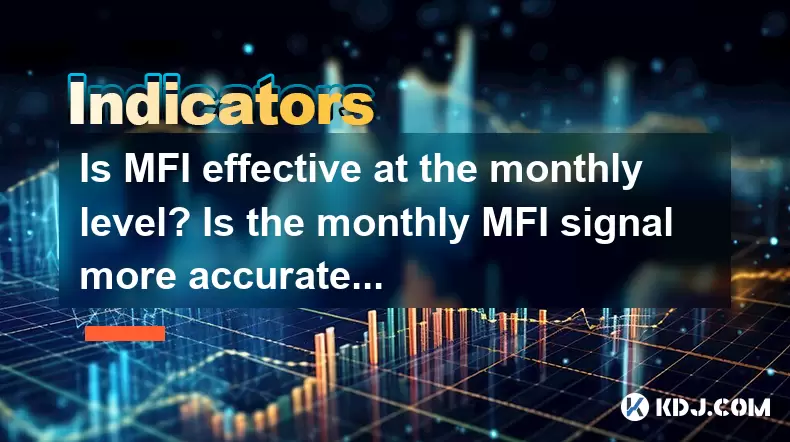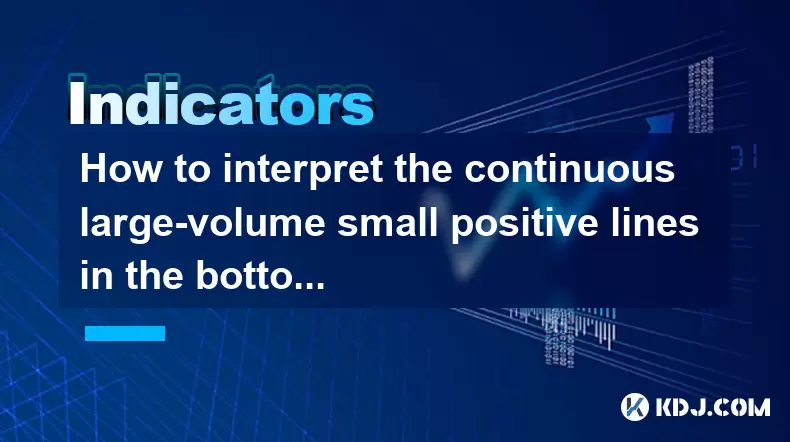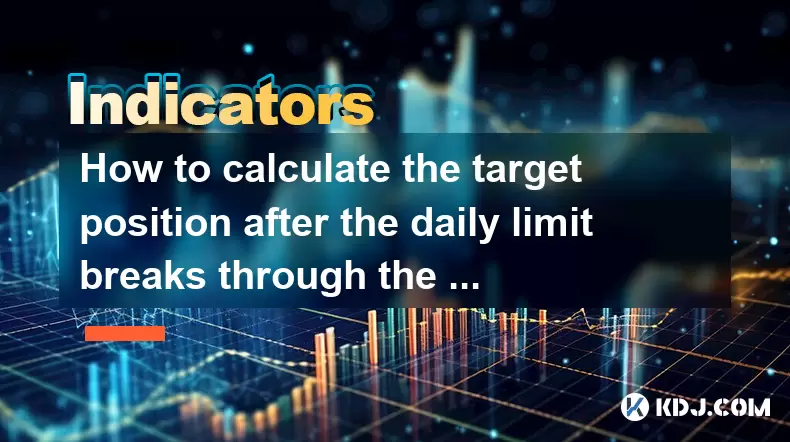-
 Bitcoin
Bitcoin $101,898.5005
-0.75% -
 Ethereum
Ethereum $2,258.1125
-1.07% -
 Tether USDt
Tether USDt $1.0004
0.01% -
 XRP
XRP $2.0178
-2.93% -
 BNB
BNB $624.0243
-1.53% -
 Solana
Solana $134.3298
-0.90% -
 USDC
USDC $0.9999
0.01% -
 TRON
TRON $0.2675
-2.05% -
 Dogecoin
Dogecoin $0.1538
-1.96% -
 Cardano
Cardano $0.5482
-1.11% -
 Hyperliquid
Hyperliquid $35.5636
5.45% -
 Bitcoin Cash
Bitcoin Cash $453.4902
-1.66% -
 Sui
Sui $2.5134
-2.97% -
 UNUS SED LEO
UNUS SED LEO $9.1292
1.77% -
 Chainlink
Chainlink $11.8457
-1.60% -
 Stellar
Stellar $0.2312
-2.73% -
 Avalanche
Avalanche $16.9721
0.29% -
 Toncoin
Toncoin $2.7549
-3.82% -
 Shiba Inu
Shiba Inu $0.0...01081
-1.10% -
 Litecoin
Litecoin $80.8250
-0.71% -
 Hedera
Hedera $0.1374
0.21% -
 Monero
Monero $305.4827
-2.36% -
 Ethena USDe
Ethena USDe $1.0006
0.00% -
 Dai
Dai $1.0000
-0.01% -
 Polkadot
Polkadot $3.2085
-3.12% -
 Bitget Token
Bitget Token $4.0845
-3.13% -
 Uniswap
Uniswap $6.3353
-1.63% -
 Pi
Pi $0.5085
-0.70% -
 Pepe
Pepe $0.0...08913
-3.82% -
 Aave
Aave $232.7090
-0.58%
Is MFI effective at the monthly level? Is the monthly MFI signal more accurate?
Monthly MFI is effective for identifying long-term trends and major reversals, but may be less responsive to short-term changes compared to daily or weekly charts.
May 24, 2025 at 12:21 am

Is MFI effective at the monthly level? Is the monthly MFI signal more accurate?
The Money Flow Index (MFI) is a popular technical indicator used in the cryptocurrency trading community to gauge the strength of price movements and potential reversals. While the MFI is commonly used on daily and weekly charts, many traders wonder about its effectiveness and accuracy when applied to monthly timeframes. In this article, we will explore the effectiveness of MFI at the monthly level and whether the monthly MFI signal is more accurate than other timeframes.
Understanding the Money Flow Index (MFI)
Before delving into the effectiveness of MFI on monthly charts, it's crucial to understand what the Money Flow Index is and how it works. The MFI is an oscillator that ranges between 0 and 100, and it measures the inflow and outflow of money into an asset over a specified period. The MFI is calculated using price and volume data, making it a volume-weighted relative strength index (RSI).
The MFI is typically used to identify overbought and oversold conditions in the market. A reading above 80 is generally considered overbought, while a reading below 20 is considered oversold. Traders often look for divergences between the MFI and price action to anticipate potential trend reversals.
Applying MFI to Monthly Charts
When applying the MFI to monthly charts, the timeframe for calculating the indicator is extended to a month. This means that the MFI on a monthly chart considers the price and volume data for the entire month rather than daily or weekly periods. This longer timeframe can provide a broader perspective on market trends and help identify significant turning points.
To apply the MFI to a monthly chart in a cryptocurrency trading platform, follow these steps:
- Open your trading platform and select the cryptocurrency pair you want to analyze.
- Navigate to the chart settings and change the timeframe to monthly.
- Add the MFI indicator to the chart. This is usually done by selecting the indicator from a list of available technical indicators.
- Adjust the MFI settings if necessary. The default setting is often 14 periods, but you can experiment with different values to see how it affects the indicator's sensitivity.
Effectiveness of Monthly MFI
The effectiveness of the MFI at the monthly level depends on various factors, including the cryptocurrency being analyzed, market conditions, and the trader's strategy. Monthly MFI can be particularly useful for identifying long-term trends and major reversals, as it smooths out short-term fluctuations and focuses on broader market movements.
However, the monthly MFI may be less responsive to short-term price changes, which can be a disadvantage for traders who rely on quick entries and exits. The longer timeframe means that the MFI signal may take longer to form and may not capture short-term trading opportunities as effectively as daily or weekly charts.
Accuracy of Monthly MFI Signals
The accuracy of monthly MFI signals is a critical consideration for traders. Monthly MFI signals can be more accurate for identifying significant trend changes and major market reversals compared to shorter timeframes. This is because the monthly MFI considers a larger dataset and is less susceptible to short-term noise and false signals.
However, the accuracy of monthly MFI signals can be affected by the choice of parameters. The default setting of 14 periods may not be optimal for all cryptocurrencies and market conditions. Traders may need to experiment with different parameter values to find the best setting for their specific needs.
Comparing Monthly MFI to Other Timeframes
To determine whether the monthly MFI signal is more accurate, it's essential to compare it to other timeframes, such as daily and weekly charts. Daily MFI signals are more frequent and can help traders capture short-term trading opportunities, but they may also generate more false signals due to short-term market noise.
Weekly MFI signals offer a middle ground between daily and monthly timeframes, providing a balance between responsiveness and accuracy. Weekly charts can help traders identify medium-term trends and reversals while still being more responsive than monthly charts.
Practical Examples of Monthly MFI Analysis
To illustrate the effectiveness and accuracy of monthly MFI signals, let's look at a few practical examples in the context of cryptocurrency trading.
Example 1: Bitcoin (BTC) Monthly MFI Analysis
In this example, we analyze the monthly MFI of Bitcoin (BTC) to identify potential trend reversals. If the monthly MFI of BTC reaches an overbought level above 80 and starts to diverge from the price action, it could signal a potential bearish reversal. Conversely, if the monthly MFI drops to an oversold level below 20 and shows bullish divergence, it may indicate a potential bullish reversal.
Example 2: Ethereum (ETH) Monthly MFI Divergence
For Ethereum (ETH), we examine the monthly MFI for signs of divergence. If the price of ETH continues to make higher highs while the monthly MFI makes lower highs, this bearish divergence could signal a potential trend reversal. Similarly, if the price makes lower lows while the monthly MFI makes higher lows, it could indicate a bullish divergence and a potential trend change.
Example 3: Altcoin Monthly MFI Trends
When analyzing altcoins, such as Cardano (ADA) or Polkadot (DOT), the monthly MFI can help identify long-term trends and potential entry or exit points. For instance, if the monthly MFI of an altcoin remains above 50 for an extended period, it may suggest a strong bullish trend. Conversely, if the monthly MFI stays below 50 for a prolonged time, it could indicate a bearish trend.
Using Monthly MFI in Trading Strategies
Incorporating monthly MFI into trading strategies can enhance a trader's ability to identify significant market moves and make informed decisions. Here are some ways to use monthly MFI effectively:
Trend Confirmation: Use the monthly MFI to confirm long-term trends identified on daily or weekly charts. If the monthly MFI aligns with the trend direction on shorter timeframes, it can increase confidence in the trade.
Entry and Exit Points: Use monthly MFI signals to identify potential entry and exit points for long-term positions. Look for overbought or oversold conditions and divergences to time your trades more effectively.
Risk Management: Incorporate monthly MFI readings into your risk management strategy. If the monthly MFI indicates extreme overbought or oversold conditions, consider adjusting your position sizes or setting tighter stop-loss levels.
Frequently Asked Questions
Q: Can the monthly MFI be used in conjunction with other indicators?
A: Yes, the monthly MFI can be used in conjunction with other technical indicators to enhance its effectiveness. For example, traders often combine the monthly MFI with moving averages, trend lines, or other oscillators to confirm signals and increase the accuracy of their analysis.
Q: How do market conditions affect the effectiveness of monthly MFI?
A: Market conditions play a significant role in the effectiveness of monthly MFI. In trending markets, the monthly MFI can be more effective at identifying major reversals and trend continuations. However, in choppy or range-bound markets, the monthly MFI may generate more false signals and be less reliable.
Q: Is the monthly MFI more suitable for certain types of cryptocurrencies?
A: The monthly MFI can be applied to all types of cryptocurrencies, but its effectiveness may vary. For established cryptocurrencies like Bitcoin and Ethereum, the monthly MFI can be more reliable due to higher liquidity and more consistent trends. For newer or less liquid altcoins, the monthly MFI may be less effective due to increased volatility and less predictable price movements.
Q: How often should traders review the monthly MFI?
A: Traders should review the monthly MFI at the end of each month to assess the overall trend and potential turning points. However, it's also important to monitor the monthly MFI throughout the month to catch any significant changes or divergences that may occur before the month ends.
Disclaimer:info@kdj.com
The information provided is not trading advice. kdj.com does not assume any responsibility for any investments made based on the information provided in this article. Cryptocurrencies are highly volatile and it is highly recommended that you invest with caution after thorough research!
If you believe that the content used on this website infringes your copyright, please contact us immediately (info@kdj.com) and we will delete it promptly.
- XRP Rally Meets Neo Pepe Presale: A Meme Coin Revolution?
- 2025-06-23 17:05:13
- Coin-Op Comeback: Arcade Bars, Stern, and a Director's New Venture
- 2025-06-23 16:45:12
- XRP in Japan: From Community Day Tacos to Payment Sector Transformation
- 2025-06-23 17:05:13
- LILPEPE Presale Frenzy: The Meme Coin Revolution is Here, Ya'll!
- 2025-06-23 16:45:12
- Bitcoin Crash Incoming? Kiyosaki Bets Big on Silver Amidst Global Uncertainty
- 2025-06-23 17:25:11
- Dogecoin, Meme Coins, Price Prediction: Riding the Bullish Wave?
- 2025-06-23 17:25:11
Related knowledge

Is the high opening and low closing and huge volume the next day a trap for more?
Jun 23,2025 at 05:07pm
Understanding High Opening and Low Closing with Huge VolumeWhen traders observe a high opening followed by a low closing and massive volume the next day, it often raises concerns about whether this is a trap set by larger players in the market. This pattern typically indicates strong volatility within a short period, which can confuse retail investors. ...

How to interpret the MACD's second golden cross on the water but insufficient volume?
Jun 23,2025 at 05:01pm
Understanding the MACD Indicator and Its SignificanceThe Moving Average Convergence Divergence (MACD) is a widely used technical analysis tool in cryptocurrency trading. It helps traders identify potential buy or sell signals by showing the relationship between two moving averages of an asset’s price. The MACD line, signal line, and histogram are the th...

How much volume is required for the W-bottom to break through the neckline of the time-sharing chart?
Jun 23,2025 at 04:21pm
Understanding the W-Bottom Pattern in Cryptocurrency TradingThe W-bottom pattern is a popular technical analysis formation used by traders to identify potential bullish reversals. It typically appears at the end of a downtrend and resembles the letter 'W' on price charts. In the context of cryptocurrency trading, where volatility is high and trends shif...

How to interpret the continuous large-volume small positive lines in the bottom area?
Jun 23,2025 at 04:43pm
Understanding the Basics of 'Large-Volume Small Positive Lines'In technical analysis, especially within the cryptocurrency market, the pattern known as 'large-volume small positive lines' refers to a scenario where the price increases slightly (small positive candlestick) but is accompanied by unusually high trading volume. This phenomenon typically occ...

How to read the sideways consolidation after the bottom volume and long positive line?
Jun 23,2025 at 02:28pm
Understanding the Sideways ConsolidationWhen analyzing cryptocurrency charts, sidewards consolidation refers to a phase where prices move within a narrow range without a clear upward or downward trend. This pattern often appears after significant price movements, such as a sharp increase followed by a period of equilibrium between buyers and sellers. In...

How to calculate the target position after the daily limit breaks through the previous high?
Jun 23,2025 at 02:57pm
Understanding the Daily Limit BreakthroughIn cryptocurrency trading, a daily limit typically refers to the maximum price movement allowed within a single trading day on certain exchanges. When this limit is breached, especially when it surpasses the previous high, traders often seek to calculate the target position or expected price movement following s...

Is the high opening and low closing and huge volume the next day a trap for more?
Jun 23,2025 at 05:07pm
Understanding High Opening and Low Closing with Huge VolumeWhen traders observe a high opening followed by a low closing and massive volume the next day, it often raises concerns about whether this is a trap set by larger players in the market. This pattern typically indicates strong volatility within a short period, which can confuse retail investors. ...

How to interpret the MACD's second golden cross on the water but insufficient volume?
Jun 23,2025 at 05:01pm
Understanding the MACD Indicator and Its SignificanceThe Moving Average Convergence Divergence (MACD) is a widely used technical analysis tool in cryptocurrency trading. It helps traders identify potential buy or sell signals by showing the relationship between two moving averages of an asset’s price. The MACD line, signal line, and histogram are the th...

How much volume is required for the W-bottom to break through the neckline of the time-sharing chart?
Jun 23,2025 at 04:21pm
Understanding the W-Bottom Pattern in Cryptocurrency TradingThe W-bottom pattern is a popular technical analysis formation used by traders to identify potential bullish reversals. It typically appears at the end of a downtrend and resembles the letter 'W' on price charts. In the context of cryptocurrency trading, where volatility is high and trends shif...

How to interpret the continuous large-volume small positive lines in the bottom area?
Jun 23,2025 at 04:43pm
Understanding the Basics of 'Large-Volume Small Positive Lines'In technical analysis, especially within the cryptocurrency market, the pattern known as 'large-volume small positive lines' refers to a scenario where the price increases slightly (small positive candlestick) but is accompanied by unusually high trading volume. This phenomenon typically occ...

How to read the sideways consolidation after the bottom volume and long positive line?
Jun 23,2025 at 02:28pm
Understanding the Sideways ConsolidationWhen analyzing cryptocurrency charts, sidewards consolidation refers to a phase where prices move within a narrow range without a clear upward or downward trend. This pattern often appears after significant price movements, such as a sharp increase followed by a period of equilibrium between buyers and sellers. In...

How to calculate the target position after the daily limit breaks through the previous high?
Jun 23,2025 at 02:57pm
Understanding the Daily Limit BreakthroughIn cryptocurrency trading, a daily limit typically refers to the maximum price movement allowed within a single trading day on certain exchanges. When this limit is breached, especially when it surpasses the previous high, traders often seek to calculate the target position or expected price movement following s...
See all articles
























































































